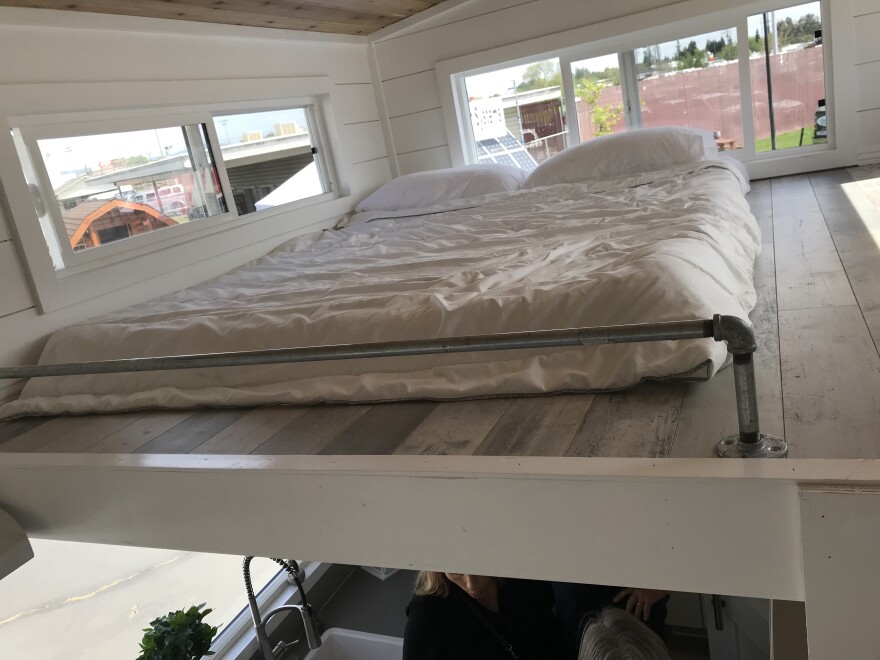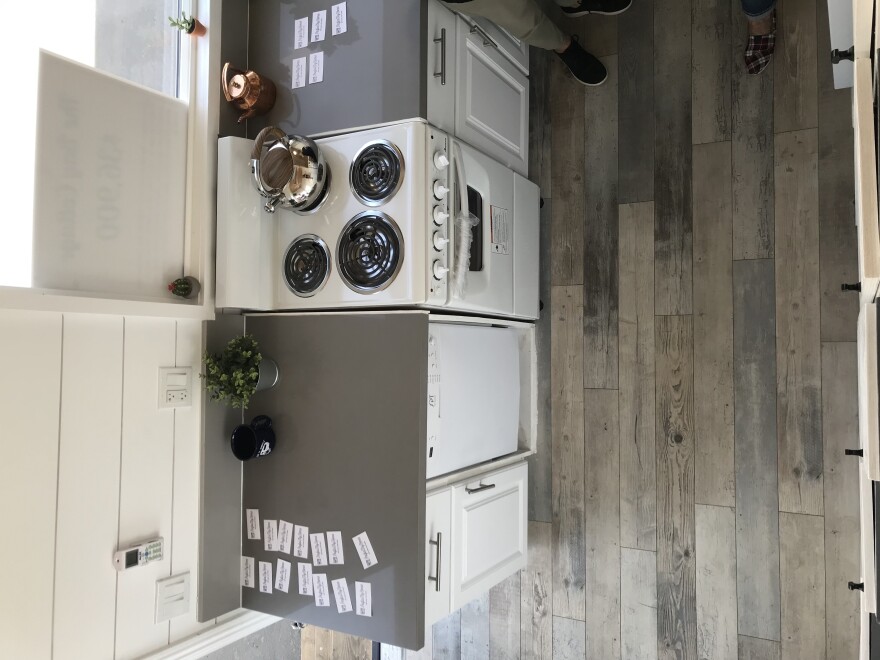The Camp Fire displaced thousands from their homes in November. Some are now living in other places across the United States, but many have stayed in the area and are now living in Chico, where housing is extremely limited. This lack of housing has led to recreational vehicles popping up as momentary dwellings all over the city. NSPR recently received a question from an NSPR listener asking about temporary housing options for people—this person was specifically interesting in knowing whether or not shipping containers or tiny homes were viable options.
While I haven’t heard of or seen shipping containers being used as shelter for Camp Fire evacuees, tiny homes and yurts are two options that people are turning toward.
First, let’s look into tiny homes. These are temporary dwellings that are less than 400 square-feet in size. They’re classified as recreational vehicles and are usually attached to a trailer bed. To learn more about tiny homes, I talked with Todd Overton, the CEO of Bidwell Tiny Homes. He and Aaron Andrus started the company after the fire.
“We were wanting to build a tiny house for ourselves to travel around in, and then when this disaster happened, we’re seeing that a lot of people are buying RVs to live in and we just really decided that ‘Hey, maybe we should launch a full business and build these for other people,’” Overton said.

Overton lived in an RV for two to three years, but he said he noticed that it didn’t have durability like a tiny home did. It also had a certain feel to it, he said.
“We’ve spoken with multiple people who live in RVs right now that would much rather have a tiny house,” Overton said. “They’re a lot more comfortable, it’s more of a house-feel than an RV. They’re built way better, they’ll last way longer, they hold their value.”
Overton and Andrus said they have received a lot of support for the business. They made their debut at the Chico Home and Garden show, along with other tiny home companies. I visited a few of them. The tiny homes include a loft, bathroom and washing machine. The cost of some of these tiny homes was about $37,000.
Andrus predicts these types of dwellings will continue to spring up, as he and Overton have had a lot of people inquire about purchasing a tiny home.
“I think that Chico and the surrounding area will have a lot more RVs, a lot more trailers because of the governor’s order for allowing temporary housing in the tri-counties that were affected by wildfires,” Andrus said.
Yurts are another type of temporary housing that is being utilized by some Camp Fire evacuees. If you’re not familiar, a yurt looks like a circular combination of a tent, hut and house. They have a lattice wall, circular shape and conical ceiling, all covered by a tarp. These dwellings were originally used by nomadic people in Asia, and have become popular for glamorous camping, also known as “glamping.” To learn more about yurts, I talked to Corena Dixon. She’s the donations coordinator for the local chapter of Vietnam Veterans of America. She showed me the yurt she has in her backyard, which was about 16 feet wide.

“I honestly believe in this idea as something that could be put up really easy, it’s gonna be stable,” Dixon said. “In this case, we have locks on the doors so you could literally lock yourself in, lock your space up and feel safe.”
Since the disaster, Dixon has hosted many Camp Fire evacuees in her yurt. She talked about the durability and how yurts can last at least five years.
“If you’re putting it up and breaking it down, putting it up and breaking it down, then you know, it might last longer because you’re storing it,” she said. “But the longer the vinyl sits out in the weather, or depending which trees you’ve got it under because some trees are more acidic and stuff like that then it might break down a little faster.”

Yurts cost around $3,000 for the most basic layout. Adding other pieces like composting toilets and camp stoves will increase the price.
So yes, there are viable alternative housing options outside of RVs that are being utilized by those who’ve been displaced by the Camp Fire. The ones I’ve seen most are tiny homes and yurts.
A tiny house has a price tag of about $55,000 and can be moved around on a trailer bed. A yurt can be purchased for around $3,000 and can be broken down and moved easily.



